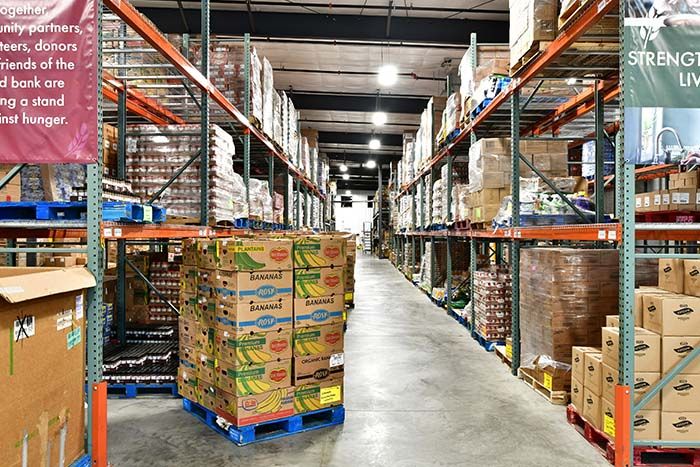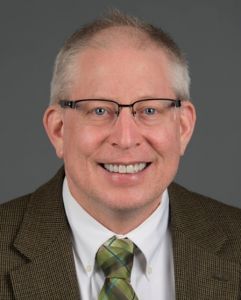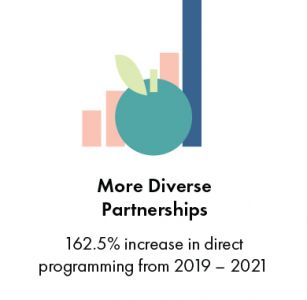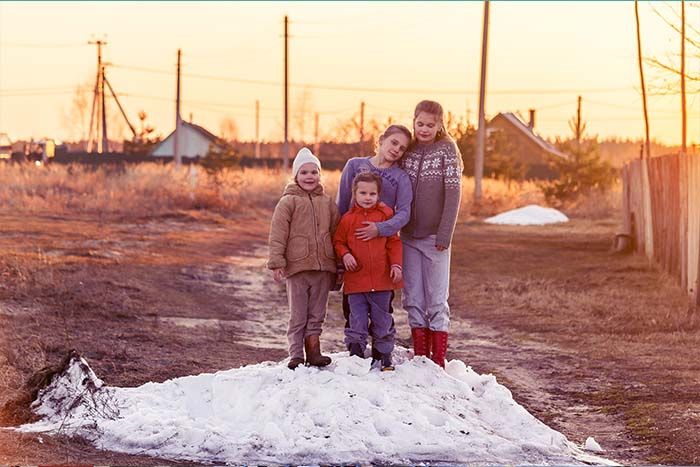
October 23, 2025
FMP Responds to FoodShare Delays
Feed My People Food Bank (FMP) is urging community awareness and preparedness following the Wisconsi...
It's been two years since the onset of the COVID-19 pandemic, and Feed My People (FMP) has become adept at hurdling challenges like rising costs and weaving through extra safety precautions. As a leader in our community, relied upon to provide food to anyone in need within 14 mostly rural Wisconsin counties, we strive to meet the demand. But along the way, we've been taking steps to not only defend the ground we've gained but also to rise to the challenge through whatever comes our way next.
"Many people who have been most impacted by the pandemic were food insecure or at risk of food insecurity before COVID-19 and are facing greater hardship since the pandemic began." - The Impact of the Coronavirus on Food Insecurity in 2020 & 2021, Feeding America
The Effect of Inflation
Inflation rose 7.5% in 2021 in the Midwest, according to the U.S. Bureau of Labor Statistics' Consumer Price Index, which is the most significant increase since 1982. Inflation has a disproportionate effect on lower-income households. As costs for essentials like groceries, transportation, and housing continue to rise, already stretched household budgets have little ability to accommodate the climbing cost of living. As fuel and food prices continue to surge, the same increased prices affecting those we serve are also hitting the food bank. It is simply getting more expensive.

Additionally, supply chain issues linked to the shortage of drivers, dock workers, and warehouse workers are causing ordered items to sit in warehouses instead of reaching households. Bulk oatmeal we ordered in October 2021 sat in a warehouse in Colorado waiting for an available driver to bring it to FMP, arriving six weeks later than promised. However, fresh produce, vital to good nutrition, can't sit in warehouses for that long. We are working within the network of food banks across the country to be very intentional about ordering perishable items with reliable transportation.
"Every day we are finding creative solutions to combat higher costs, transportation, and staff challenges to ensure we never compromise our mission of serving the hungry." - Rick Sorensen, FMP Operations Manager
Partnering for Immediate Impact
FMP and our 200+ hunger-relief partners strive to fill the hunger gap to make an impact today. Partners like Abbotsford Food Pantry on the edge of our service area in Clark County and Stepping Stones in Dunn County directly serve large, underserved populations in rural areas.
Our Pop-Up Pantry program, once a short-term outreach targeting high-need neighborhoods, has expanded into a year-round program that serves both rural areas and more populated areas like Eau Claire and Chippewa Falls. Its impact is far greater than the short-term needs it addresses. By being there for our neighbors in need, we're giving back hope by providing a safety net.
Another greatly expanded outreach is our school pantry program. Since this initiative started in 2017, a few pantries have been added every year. In 2021, however, nine school pantries were added, nearly doubling the total, going from 12 to 21 pantries in a single year. More school pantries mean more students and their families are being empowered with a choice to decide what food to take home for their families in a space that's safe and familiar.

Shortening the Hunger Line in the Future
We are learning that one size does not fit all, however. Rather than solely counting our success by the number of people served and pounds of food distributed, measuring outcomes by the diversity of needs we're meeting is at the heart of everything we're doing now and in the years ahead. Examples include improving nutritional and dietary requirements and culturally sensitive foods. These programs also help to ensure less food waste. As an organization crucially linked to food rescue, saving good food that would otherwise be destined for the trash, improving measures to do so is part of what will best serve our world and our community. Creating a new Hunger Action Center later in 2022 links both criteria together to sustain and build us for the next 40 years.
This 3600 square foot addition will help FMP identify and address the barriers people face that contribute to food insecurity through targeted programming and partnerships. In addition, the space will provide storage for food boxes, hygiene items, and cleaning supplies so FMP can respond to natural, health, or other disasters quickly, so there is no delay in our neighbors receiving help. It will also provide the space to immediately open our doors and feed people out of the food bank during times of crisis.
As a strong leader in the community, FMP cannot take for granted the progress we have made so far. We've covered a lot of ground during the past 40 years, and we're now reimagining how we will serve for the next 40. The bottom line is that we cannot do what we do without the support of our faithful donors, engaged volunteers, dynamic staff, and our resilient network of hunger-relief partners.
As a reader of this newsletter, we're grateful for your support and interest in helping us reach everyone in need of food in west central Wisconsin. Please stay connected with us this year and consider renewing your impact as a donor, volunteer, or both. We're in this together.
This article is from Feed My People's spring 2022 newsletter. Read the full issue here.
